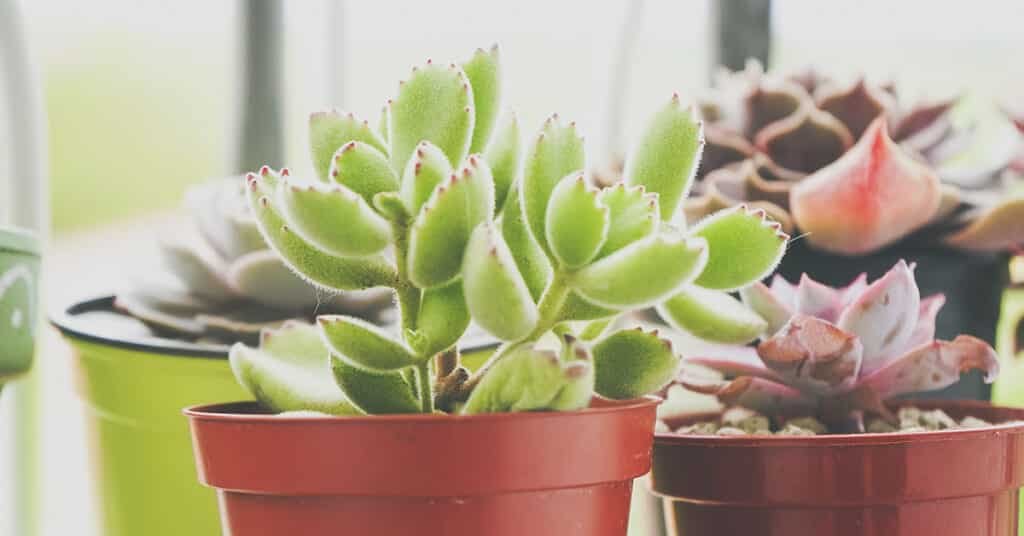Not everyone has outdoor space in which to plant a flower garden, and many who do have the space don’t have the time or desire to tend to a wide array of living plants. But most will agree they would like to have a living, blooming flowering that would add colorful beauty to their living space if it didn’t require too much care.
If you fit into this latter category, consider one of these three beautiful flowers to grow in pots that require minimal investments in terms of time, money, or space.
Moth Orchid

The moth orchid (Phalaenopsis sp.) produces delicate-looking bloom in several color choices year-round. the plant is easy to care for and likes to live in bright, indirect light, like an east-facing window.
Place the moth orchid away from the drafty locations, such as exterior doors and heating/cooling vents. The average home temperature is perfect for these potted beauties.
Potted orchids are planted in sphagnum moss which must be allowed to dry out between watering. When moss is dry to the touch, it’s time to water the plant. Water orchid until the water runs through the pot and out the bottom drain holes.
Apply a slow-release plant fertilizer specially formulated for orchids. Follow the manufacturer’s dosage and application instructions.
Fuchsia

The pendulous bi-colored blooms of red and purple make the Fuchsia an irresistible blooming beauty to grow as a potted plant. A Fuchsia will require a little more care than most flowering potted plants, but the long-blooming, bi-colored flowers produced all summer by this plant are well worth the effort.
Place potted Fuchsia in a shady location and feed it a steady diet of diluted liquid plant food throughout the growing season. The steady feeding enables the plant to produce growth and a multitude of blooms.
As the Fuchsia grows, pinch off the stem tops to force side growth and a fuller plant. Pinch off side tips as needed to keep plant shaped as desired. Stop pinching the stems off 8-10 weeks before you want the fuchsia to flower.
Once the fuchsia has begun to bloom, keep it flowering continuously by removing the faded flowers. During the heat of summer, the plant will stop flowering. Don’t worry, it will start blooming again as soon as the temperature cools down.
Fuchsia will last for years with proper over-winter care. At the end of summer, give the plant an overall light pruning, removing all spent flowers.
Place Fuchsia in a cool, dark location, like a basement, to force the plant into dormancy. Water it once a month during the winter.
In early spring, remove the Fuchsia from its dark winter home and place it outside in the sunlight. Prune the plant all the way back to live wood, then resume the regular feeding and watering.
Geraniums

Geraniums (Pelargonium x hortorum) are perennial plants that come in many bloom colors, leaf textures, and growing heights. The plants will produce blooms all summer and grow equally well in a pot or when planted in-ground.
To plant and grow in containers indoors or outdoors, fill the container halfway with a good quality potting soil, mix in a pinch of sugar, moisten the soil and plant the geranium of choice in the center of the pot.
Place newly potted geranium in a sunny location where the plant will receive filtered sunlight at least four hours a day. Water regularly to keep the soil moist, but not soggy. Feed geraniums a water-soluble plant food once a week during the summer months to promote vigorous plant growth and blooms.
The plant can be kept at the desired height by keeping the top pinched out, but also note that will reduce the number of blooms. Remove spent blooms to encourage new buds to form.
Geraniums can be kept over-winter and enjoyed for many years by simply placing the pot near a lamp that remains on 24 hours a day. If this is not a feasible option, then take a 4-inch cutting from a green portion of the plant in the fall.
Strip off the bottom leaves of the cutting and stick the cut end into the rooting hormone to coat. next, place the cut end into a small container of moist potting soil and place a clear plastic bag over the cutting and pot to keep the air humid. The new cutting will form roots and create a new geranium plant that is ready for transplanting in about 8 weeks.
More Than One
Some of the most interesting planting pots contain more than one flower, and that look is easy to achieve when you remember these simple planting rules-
*Select three plants for a container – a thriller, a spiller, and a filler- that have similar sun and water needs.
Life is Better When You Garden™


